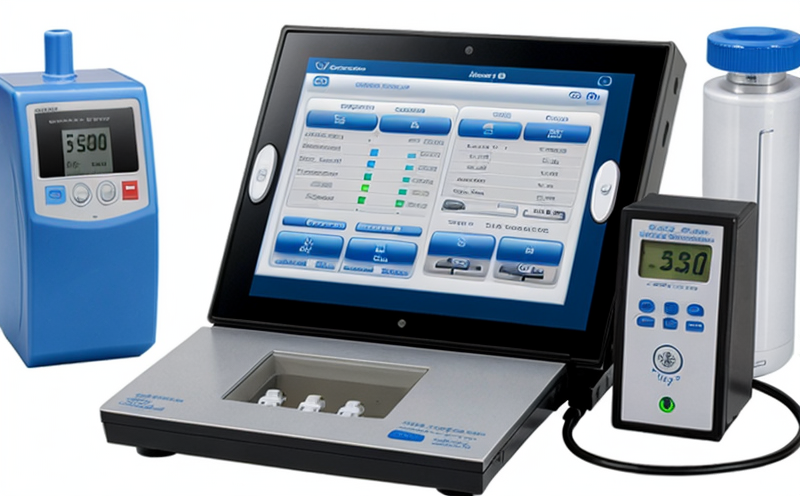Barcode and RFID Functionality Testing in Infusion Systems
Infusion systems play a critical role in modern healthcare by ensuring precise delivery of medication. These systems must be reliable, safe, and efficient to prevent errors that could lead to patient harm or treatment inefficiency. Barcode and RFID functionality testing is essential for ensuring the integrity of these systems, especially given their increasing integration into automated processes.
Barcode scanning and RFID technology are used extensively in healthcare settings, particularly within infusion systems. These technologies enhance accuracy by automating identification and verification processes. In an environment where even minor errors can have severe consequences, it is imperative that these systems perform flawlessly every time they are deployed.
The testing process involves several steps designed to validate the functionality of barcode and RFID tags in infusion systems. The first step is to ensure that the barcodes or RFID tags are properly encoded with all necessary patient information, including medication type, dosage, and administration schedule. This encoding must conform strictly to international standards such as ISO/IEC 15432 for RFID.
Once the tags are properly encoded, the next step is to verify that the reader can accurately interpret this data. This involves placing a test sample of infusion devices into a controlled environment where they undergo multiple reads by the RFID scanner or barcode reader. The results are then compared against expected outputs to ensure consistency and reliability.
A critical part of the testing process includes simulating real-world conditions under which these systems will operate. This can include varying environmental factors such as temperature, humidity, electromagnetic interference (EMI), and even physical stress from frequent use in hospital settings. The tests are designed to uncover any potential weaknesses or vulnerabilities that could affect system performance.
The testing also includes verifying the integration of RFID and barcode technology with other components within the infusion system. This ensures not only the standalone functionality but also how these systems work together as part of a larger healthcare IT infrastructure. Compliance with regulations such as ISO 14971, which deals with risk management for medical devices, is crucial here.
Upon completion of testing, comprehensive reports are generated detailing all aspects of the test procedures and results. These reports provide detailed insights into system performance under various conditions, highlighting areas where improvements may be needed. They also serve as documentation that can support regulatory compliance efforts, ensuring that medical device manufacturers meet strict standards set by bodies like the FDA or EU.
Testing barcode and RFID functionality in infusion systems is not just about ensuring immediate reliability; it’s about building trust between healthcare providers and patients alike. By rigorously validating these critical components through thorough testing protocols, we help pave the way for safer, more effective patient care.
Scope and Methodology
The scope of barcode and RFID functionality testing in infusion systems encompasses several key areas. Primarily, it focuses on verifying that both barcode and RFID technologies function correctly within the context of an infusion system. This includes checking their ability to accurately read and write data, ensuring compatibility with other parts of the system, and maintaining robust performance under various environmental conditions.
The methodology employed in this testing involves a series of standardized procedures aimed at simulating real-world usage scenarios as closely as possible. This typically begins with setting up controlled environments that replicate typical hospital settings where infusion systems are used. The tests then proceed to assess the accuracy and reliability of barcode reading mechanisms, RFID tag encoding, and overall system integration.
For barcode testing specifically, this involves using specialized equipment capable of mimicking different types of barcodes found in healthcare facilities. These machines simulate various scanning angles, lighting conditions, and even potential damage from handling to ensure that the barcode can still be read accurately despite these challenges. Similarly, RFID tests involve placing devices with RFID tags into environments simulating electromagnetic interference levels present in hospitals.
Another crucial aspect of this methodology is conducting stress testing. This involves subjecting the infusion system to extreme conditions such as high humidity and temperature variations to see how well it handles these stresses without compromising its functionality. The goal here is to identify any potential weaknesses that could lead to failures during actual use.
The results from these tests are meticulously documented in detailed reports, providing clear evidence of the infusion system’s performance across all relevant parameters. These reports serve multiple purposes – they provide valuable feedback for continuous improvement efforts, support compliance with regulatory requirements, and most importantly, ensure patient safety by identifying any risks early on.
Industry Applications
- Hospital Settings: Infusion systems equipped with RFID and barcode functionality are widely used in hospitals to manage medication administration accurately. This helps reduce the risk of errors associated with manual identification processes.
- Home Healthcare: For patients who require long-term home care, these technologies can help track medication usage more effectively than traditional methods.
- Nursing Homes: Similar to hospitals, nursing homes benefit from enhanced accuracy and efficiency in managing medications for elderly or incapacitated residents.
- Patient Safety: By automating the verification process through barcode scanning and RFID tagging, healthcare providers can minimize medication errors which are a leading cause of adverse events.
Competitive Advantage and Market Impact
Adopting rigorous testing practices for barcode and RFID functionality in infusion systems offers significant competitive advantages. Firstly, it enhances product reliability, which is crucial for maintaining customer trust and satisfaction. Secondly, compliance with stringent standards such as ISO/IEC 15432 ensures that products meet international quality benchmarks, opening doors to broader market opportunities.
In terms of the healthcare industry itself, reliable infusion systems contribute to improved patient outcomes by reducing medication errors and enhancing overall safety. This not only benefits individual patients but also supports the broader goals of improving public health globally. By investing in thorough testing protocols for these critical components, medical device manufacturers can differentiate themselves within a competitive market while simultaneously contributing positively to public health.





